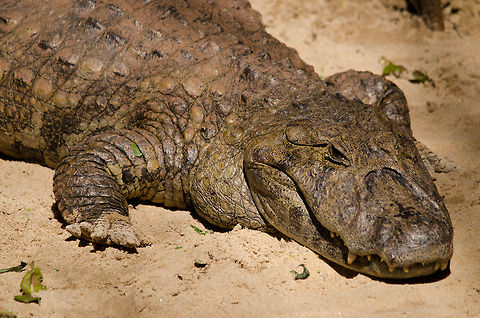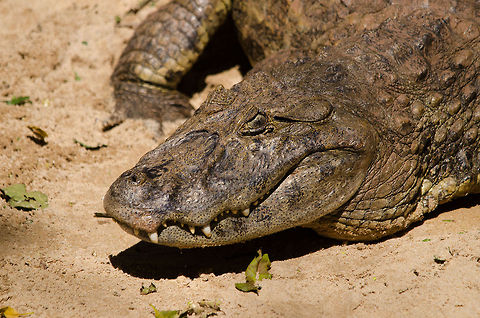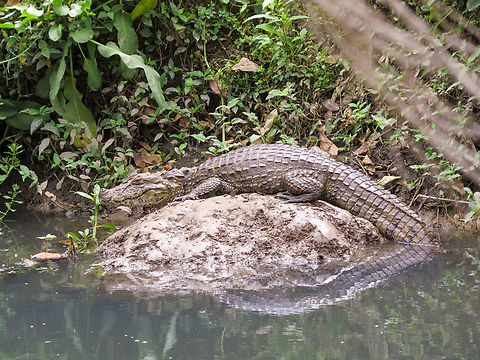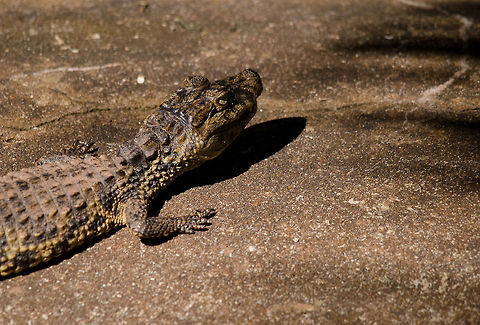
Appearance
In the wild, adults will normally grow to 2 m in length, however a few old males have been recorded to reach up to 3.5 m . Most tend to be of a light olive-green color. A few individuals will have spots on their face. The most notable physical characteristic is its broad snout from which its name is derived. The snout is well adapted to rip through the dense vegetation of the marshes. Due to this they will swallow some of the dense vegetation, while foraging for food.
Status
Hunting of the species began in the 1940s. It's skin is greatly valued for its smooth texture. Until recently this was the largest threat to the Broad-snouted caiman. However, most countries have made hunting them illegal, which had helped them to regain their population. The new threat is habitat destruction. Deforestation and pollution run-off are the two leading causes to the destruction of their habitat.
Reproduction
The Broad-snouted Caiman female will lay 18 to 50 eggs at a time. While rare, up to 129 eggs have been found within a single nest. This is presumably from several leyings. They will lay their eggs in two layers. There is a slight temperature difference between the two layers. This will result in a more even ratio of males and females. This occurs because the Caiman does not have a pair of sexchromosomes, but instead depends on temperature to determine the ratio of male and female offspring. The warmer it is the eggs will develop females and the cooler temperatures will develop males. The temperature difference needed for this varies by only one degree, 32 degrees Celsius and above the eggs will become female, 31 degrees Celsius and below they will become male.

Food
Its diet consists mainly of small invertebrates, and it can crush shells to feed on turtles and snails. As the size of the ''Caiman laitrostris'' increases the size of its prey tends to increase. All broad-snouted caiman will have a diet consisting of mostly insects however, as the caiman grows it will increase its intake of birds, fish, and reptiles.References:
Some text fragments are auto parsed from Wikipedia.